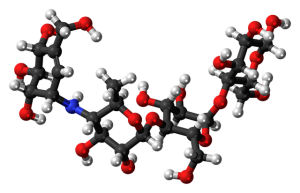GLP-1 Drugs: Dual-action medications for type 2 diabetes management that stimulate insulin secretion and slow gastric emptying, improving glycemic control and aiding weight loss. They offer significant clinical benefits, including reduced cardiovascular risk, and are suitable for patients with poorly controlled blood sugar or specific comorbidities. Long-term use shows promise in preventing cardiovascular diseases, and ongoing research focuses on personalized medicine and improved delivery methods to enhance their effectiveness and accessibility.
“GLP-1 receptor agonists, or GLP-1 drugs, have emerged as a powerful tool in diabetes management, offering more than just blood sugar control. This comprehensive article explores the clinical outcomes associated with these innovative treatments. From understanding their mechanism of action and improving glycemic control to uncovering broader metabolic benefits and assessing safety profiles, we delve into the latest research. We also examine patient selection criteria, long-term cardiovascular effects, and future prospects, including personalized medicine approaches. Discover how GLP-1 drugs are revolutionizing diabetes care.”
Understanding GLP-1 Receptor Agonists: Their Role in Diabetes Management

GLP-1 receptor agonists, also known as GLP-1 drugs, are a class of medications that mimic the effects of the natural hormone glucagon-like peptide-1 (GLP-1). These drugs play a significant role in diabetes management, particularly in type 2 diabetes. By activating specific receptors in the body, they stimulate insulin secretion in a glucose-dependent manner, helping to lower blood sugar levels.
This mechanism not only improves glycemic control but also offers additional benefits such as weight loss and reduced appetite. GLP-1 drugs have been shown to reduce HbA1c (a measure of long-term blood sugar control) by several percentage points compared to placebo, making them a valuable addition to diabetes treatment regimens. Their ability to delay gastric emptying can also contribute to feelings of fullness, aiding in weight management for individuals with obesity or overweight.
The Mechanism of Action: How GLP-1 Drugs Lower Blood Sugar

GLP-1 receptor agonists, or GLP-1 drugs, have a unique mechanism of action that sets them apart from other diabetes medications. These drugs mimic the effects of the natural hormone glucagon-like peptide-1 (GLP-1), which is secreted in response to food intake. By activating GLP-1 receptors, these agonists stimulate insulin secretion when blood sugar levels are high, helping to lower glucose quickly and effectively.
In addition to enhancing insulin release, GLP-1 drugs also slow gastric emptying, leading to a feeling of fullness and reduced appetite. This dual action not only aids in controlling blood sugar but also supports weight management, making them a valuable tool in the treatment of type 2 diabetes.
Clinical Efficacy: Improving Glycemic Control in Type 2 Diabetes

GLP-1 receptor agonists, also known as GLP-1 drugs, have demonstrated significant clinical efficacy in improving glycemic control for individuals with type 2 diabetes. These drugs mimic the effects of the natural hormone glucagon-like peptide-1 (GLP-1), which stimulates insulin secretion and suppresses glucagon release when blood glucose levels rise. This dual action helps to lower blood sugar levels, thereby improving overall metabolic control.
Several clinical trials have shown that GLP-1 drugs can lead to substantial reductions in HbA1c (a measure of long-term glycemic control) compared to placebo or other standard diabetes medications. They are particularly effective in patients who have not responded well to metformin monotherapy, offering an additional treatment option for those seeking better blood sugar management. Furthermore, GLP-1 drugs have been associated with weight loss, providing a dual benefit for patients aiming to improve both their diabetes and cardiovascular health.
Beyond Blood Sugar: Other Metabolic Benefits

GLP-1 receptor agonists, commonly known as GLP-1 drugs, have emerged as powerful tools in managing type 2 diabetes. While their primary role is to lower blood sugar levels, research has uncovered a range of other metabolic benefits that extend far beyond glycemic control. These drugs have been shown to reduce body weight and improve cardiovascular health markers, such as blood pressure and lipid profiles.
The mechanisms behind these effects are multifaceted. GLP-1 drugs increase feelings of satiety, leading to reduced calorie intake and subsequent weight loss. Additionally, they stimulate insulin secretion in a glucose-dependent manner, promoting better insulin sensitivity. This dual action not only enhances overall metabolic health but also reduces the risk of cardiovascular events, making them valuable assets in comprehensive diabetes management.
Safety Profile: Common and Rare Adverse Effects

GLP-1 receptor agonists, a class of drugs designed to mimic the effects of the gut hormone GLP-1, have been shown to offer significant clinical benefits in the management of type 2 diabetes and obesity. However, like any medication, they come with their own safety profile that includes both common and rare adverse effects.
The most frequently reported side effects of GLP-1 drugs are gastrointestinal in nature, such as nausea, vomiting, diarrhea, and abdominal pain. These symptoms are often transient and tend to diminish over time. More serious but rare adverse events include pancreatitis, kidney problems, and thyroid cancer. While these complications have been observed, their overall incidence is low, making GLP-1 drugs a relatively safe option for many patients. Regular monitoring of kidney function and thyroid health is recommended during long-term treatment.
Patient Selection: Who Benefits Most from GLP-1 Therapy?

Patient selection is a critical aspect when considering GLP-1 receptor agonists (GLP-1 drugs) as a treatment option. These medications have shown significant benefits in managing type 2 diabetes, but not all patients will experience the same positive outcomes. Several factors can influence the success of GLP-1 therapy, including patient demographics and comorbidities.
Ideal candidates for GLP-1 drug therapy are often adults with type 2 diabetes who have difficulty controlling their blood sugar levels through lifestyle modifications and oral medications alone. Patients with a body mass index (BMI) above 27 kg/m² might benefit more since these drugs can aid in weight loss, apart from improving glycemic control. Additionally, those with specific comorbidities such as cardiovascular disease or chronic kidney disease may also be suitable candidates, as GLP-1 agonists have been associated with reduced risks of these complications.
Long-term Use and Cardiovascular Outcomes

The long-term use of GLP-1 receptor agonists has been a subject of extensive research, particularly regarding their cardiovascular outcomes. Studies have shown that these drugs not only improve glycemic control but also offer substantial benefits for the heart and blood vessels over an extended period. In type 2 diabetes patients, regular administration of GLP-1 drugs has been linked to a reduced risk of major adverse cardiovascular events, including heart attacks and strokes. This positive impact is attributed to their ability to lower blood pressure, improve cholesterol levels, and reduce the overall inflammatory load on the cardiovascular system.
Moreover, recent clinical trials have demonstrated that certain GLP-1 agonists can prevent or delay the progression of cardiovascular diseases in high-risk individuals. By inhibiting excessive glucagon secretion and slowing gastric emptying, these drugs help maintain stable blood sugar levels, which is crucial for preventing diabetic complications. As a result, long-term therapy with GLP-1 drugs has emerged as a promising strategy to mitigate the cardiovascular burden associated with diabetes and improve overall patient outcomes.
Future Perspectives: Emerging Research and Personalized Medicine

The future of GLP-1 receptor agonists (GLP-1 drugs) looks promising, with emerging research continually expanding our understanding of their clinical applications. As personalized medicine gains traction, there is a growing emphasis on tailoring treatments to individual patient needs, and GLP-1 drugs are no exception. This approach may involve optimizing dosages based on genetic profiles or identifying specific patient populations who will derive the greatest benefit from these therapies. Furthermore, the development of new delivery methods, such as continuous glucose monitors linked to GLP-1 drug administration, could enhance their efficacy in managing diabetes and other metabolic disorders.
These advancements hold the potential to improve clinical outcomes even further, ensuring that GLP-1 drugs become increasingly effective and accessible tools in personalized healthcare. By leveraging cutting-edge technologies and a deeper understanding of the underlying mechanisms, future research may unlock new avenues for these drugs, expanding their role in treating various metabolic conditions and improving overall patient well-being.
